Ron, La Sangre de Cuba (Rum, The Blood of Cuba)
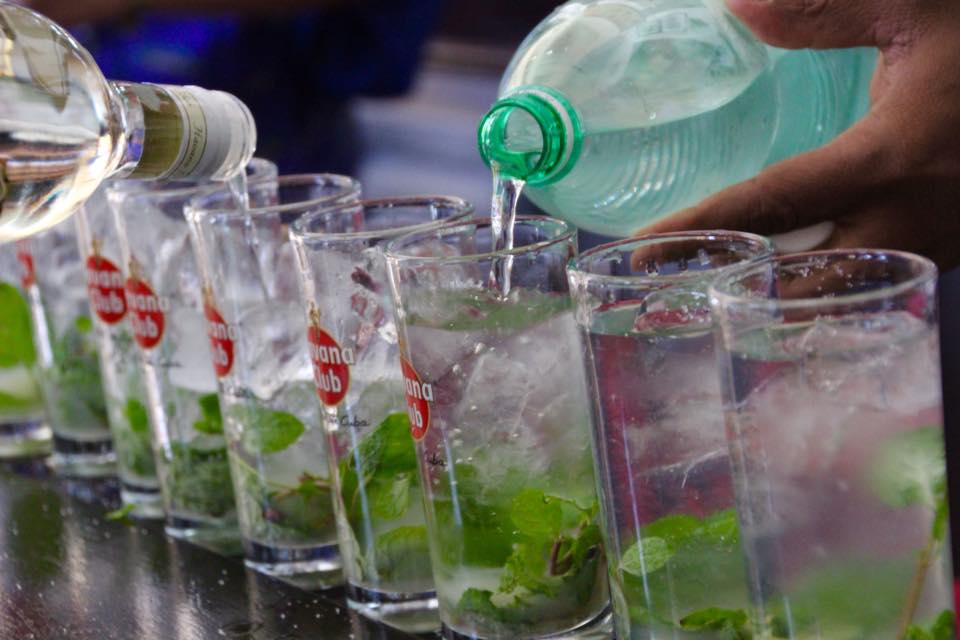
Editor’s note: This is the second piece in Molotov Cocktail’s “Rum as an Ethos” series. The title, despite being a bit of a flourish, reflects the importance of Cuba’s national spirit to the country’s future, both politically and socially. This series will be ongoing, especially in the warmer months, because if you’re not drinking rum in the summer, you really should be. ¡Salud!
“You,” the bartender said, adding six more glasses to the two-dozen already in a row. “You help.” He was dropping in fresh sprigs of mint halfway down the line by the time I rounded the corner of his bar to join him. I was fresh off the airplane to Havana, and a mojito at the Hotel Nacional, probably the most famous hotel in Cuba, had seemed like almost a necessity. In fact, I hadn’t even checked in; my luggage was still under a nearby table. Whatever my plan was, teaming up with the bartender to push out thirty of the sweet, refreshing libations to eager turistas was certainly not a part of it.
“This much?” I asked, estimating a couple of teaspoons of sugar with a large, crooked soupspoon. “Sí,” he said, nodding slightly, “más o menos.” I hurried down the line, trying to keep pace as he finished with the mint and started after me with a squeeze bottle of unripened lemon juice. I rushed back to the start with a muddler, giving each glass a quick, twisting crush, and was soon followed by the bartender now adding cubes of ice. “Cuántos?” I asked, as he handed me a bottle of Havana Club 3 Años rum. He took up another bottle to show me, counting off “Uno…dos…tres… quatrocincoseissieteochonuevediez!” as the rum level climbed up the glass.
Despite his black-tie attire and the portraits of world leaders, famous actors, and other international VIPs gazing down from the walls, my colleague was surprisingly casual. He had left enough room in the glass for about half as much soda water as rum, far more generous with the booze than any bartender I could recall, but then again I was in a country where Coca-Cola often counted for $2.50 of a $3.00 Rum and Coke. If you looked in the right places, three dollars could actually buy you an entire bottle of rum (albeit with the sort of hangover that comes with a three dollar bottle of rum). If I was going to take my drinks straight, I chose (for only about $4.00 more) to stick with rum that was around the last time the Steelers won the Super Bowl.
Clearly, the liquor was far more precious culturally than financially. As the bartender followed my rum pouring and drink stirring with the soda water, he added a splash of 7-year-old dark rum to each glass. “Gangster style,” he said in heavily accented English with a wink. After pushing 29 of the drinks out to the eager patrons (and taking one in hand for myself), my new friend reached into the humidor at the end of the bar for my wages and handed me a Montecristo cigar to go with my mojito. ¡Viva Cuba, y salud!
Four days later, I’m perched atop a concrete bench close to the Malecón, Havana’s iconic seaside roadway. Although there are almost always people in the area at all times of day, it is thronged on weekend nights by a hodgepodge of students, musicians, tourists, lovers, and families, all mingling along the concrete boulevard.
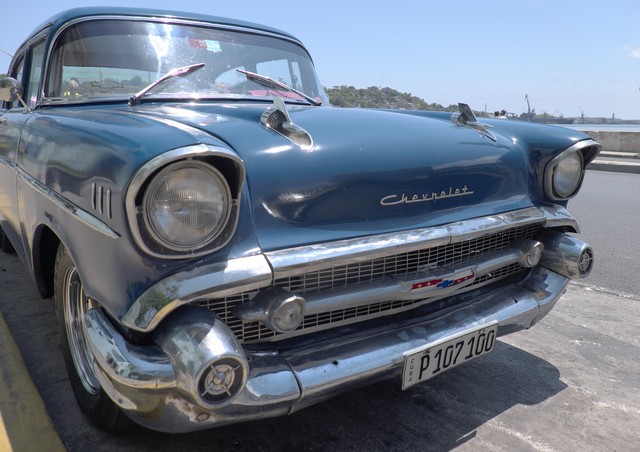 One American noted with amazement how much more the people interacted with each other directly, not distracted by cell phones. She wondered, too, if the lack of advertising could explain the rather unselfconscious approach to physical intimacy being displayed among friends, family, and couples. Her friend, meanwhile, simply started dancing to the music with a young stranger, not needing any other common language.
One American noted with amazement how much more the people interacted with each other directly, not distracted by cell phones. She wondered, too, if the lack of advertising could explain the rather unselfconscious approach to physical intimacy being displayed among friends, family, and couples. Her friend, meanwhile, simply started dancing to the music with a young stranger, not needing any other common language.
Cuba prides itself on providing free healthcare, education, housing, and even food staples (albeit a meager subsistence diet). The flip side is salaries that provide little if any disposable income. Leisure activities are, therefore, usually low- or no-cost affairs. There are a few bars, naturally, that run the expected gamut from seedy, hole-in-the-wall alcohol dens to flashy, over-the-top nightclubs aimed at tourists. In my experience though, a few friends, a handful of instruments, and, of course, a couple bottles of rum are far more entertaining and interesting.
My Cuban friend showed off some salsa dancing moves with his girlfriend and then went to pour himself another drink. “I might have a cold beer to refresh myself on a hot day,” he tells me, “but among friends, it is always rum.” Meanwhile, his girl picks up the bongo drums and taps out a rhythm, quickly picked up by the man with maracas. The guitarists start strumming, and then singing — a familiar tune. Strangers drift among the group, all sharing in the moment. A hat gets passed around for the musicians’ benefit.
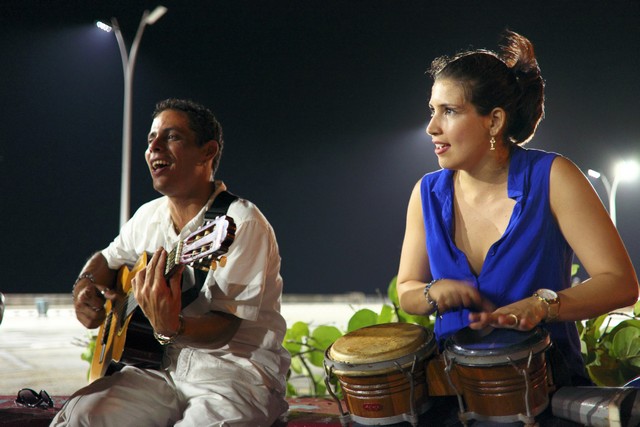 As more visitors to the island are expected, professional tour guiding becomes increasingly attractive. I met Cubans abandoning careers in everything from agriculture to electrical engineering to pursue the lucrative tips in the tourism industry. At the very least, driving around European tourists at night in a vintage 1955 Pontiac Star Chief convertible is an easy moonlighting gig; at slow in-city speeds, they won’t even realize that the engine might be a repurposed Russian tractor motor. Some worry about the economic shift away from other lines of work (for example the Cuban government substantially raised the salary for doctors last year), but concede it has been a boon for those without financial assistance from family members abroad.
As more visitors to the island are expected, professional tour guiding becomes increasingly attractive. I met Cubans abandoning careers in everything from agriculture to electrical engineering to pursue the lucrative tips in the tourism industry. At the very least, driving around European tourists at night in a vintage 1955 Pontiac Star Chief convertible is an easy moonlighting gig; at slow in-city speeds, they won’t even realize that the engine might be a repurposed Russian tractor motor. Some worry about the economic shift away from other lines of work (for example the Cuban government substantially raised the salary for doctors last year), but concede it has been a boon for those without financial assistance from family members abroad.
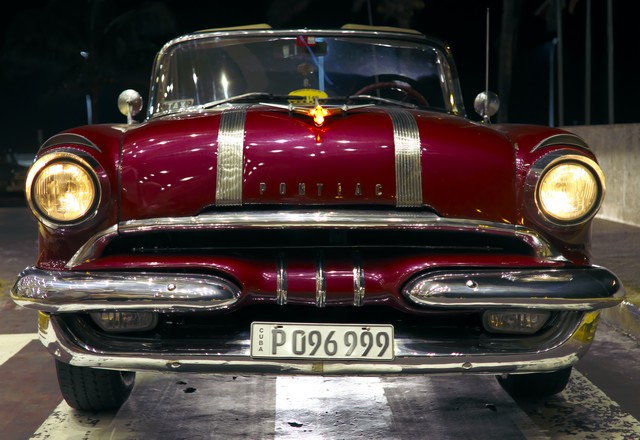 At over $5 billion dollars, remittances from the United States considerably outrank the rest of the Cuban economy, with no cost of domestic resources. There is a saying in Cuba, that all you need is faith. The word for “faith,” fe, is also the acronym for familia extranjera, e.g. family abroad. While roughly 60-65% of households have such a boon, lifting restrictions may be especially important to those households without.
At over $5 billion dollars, remittances from the United States considerably outrank the rest of the Cuban economy, with no cost of domestic resources. There is a saying in Cuba, that all you need is faith. The word for “faith,” fe, is also the acronym for familia extranjera, e.g. family abroad. While roughly 60-65% of households have such a boon, lifting restrictions may be especially important to those households without.
Government estimates suggest a possible influx of 1.5-2 million Americans annually to Cuba if the embargo is lifted entirely, on top of the three million visitors the island already gets. Although Cuban rum producers are eager to have many of them taking home bottles of their wares, it is hard to imagine Cuban infrastructure keeping up with such a rapid increase in demand. Existing international joint ventures, such as the one currently wrangling in trade court over Havana Club branding rights, will likely have the best potential to ramp up capacity, but most smaller labels will take considerably longer, depending on government support and trade rules. Also, since the aging process typically lasts anywhere from three to fifteen years, supply simply won’t be able to keep up with demand for some time, for labels of any size. Meanwhile, expect Bacardi, still touting their Cuban heritage despite nearly six and a half decades in exile, to continue aggressively protecting their international brand.
The increase in visitors is expected to strain other infrastructure as well, especially accommodation. Bookings are already up significantly among travelers trying to beat the rush, but hotel rooms simply aren’t available to meet demand. Though adventurous individuals may find housing in private guestrooms, called casas particulares, hotel-seekers are being advised to stay flexible on dates and revise their expectations about amenities. Construction is slow, difficult, and for the average Cuban often prohibitively expensive. Even in Havana, home to 20% of the population but 45% of GDP production, more than three buildings a day collapse from insufficient maintenance and replacement, according to Miguel Coyula, architect, urban planner, and professor at the University of Havana. The idea of a “time capsule nation” may be alluring to visitors, but often represents dangerous uncertainty to locals living in buildings that average 75 years old. All the more reason to enjoy a drink or two.
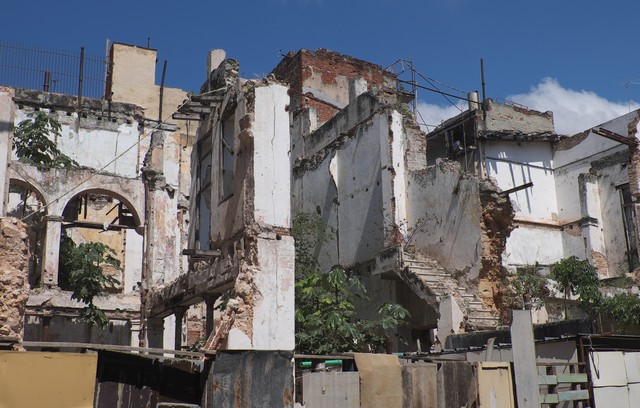 Whether knocking down the embargo will drive locals more into an all-out resort economy the likes of Cancun or Nassau, a more regulated and ecologically-minded approach like that espoused (at least in public relations campaigns) by Costa Rica and Brazil, or perhaps even a primarily knowledge-based economy supported by activities like medical tourism, remains to be seen. For now, though, it is enough to while away the night, sitting by the Malecón with a bottle of rum and a handful of friends.
Whether knocking down the embargo will drive locals more into an all-out resort economy the likes of Cancun or Nassau, a more regulated and ecologically-minded approach like that espoused (at least in public relations campaigns) by Costa Rica and Brazil, or perhaps even a primarily knowledge-based economy supported by activities like medical tourism, remains to be seen. For now, though, it is enough to while away the night, sitting by the Malecón with a bottle of rum and a handful of friends.
Tim Choate works in Washington, D.C. as a consultant to nonprofits. He is also known to cook, take photographs, run for beer, and frequently find himself in unusual or bizarre circumstances abroad.
Photo credit: Christina Prieto

